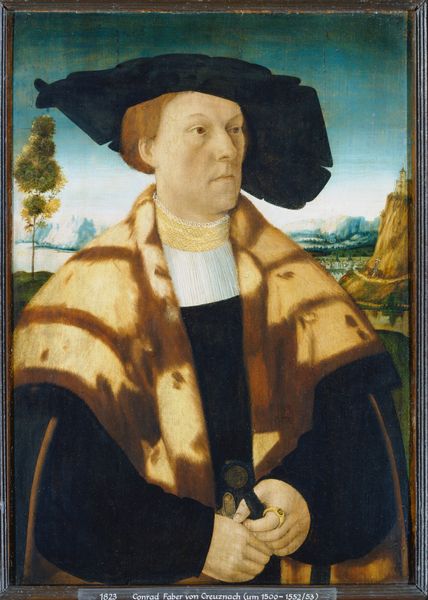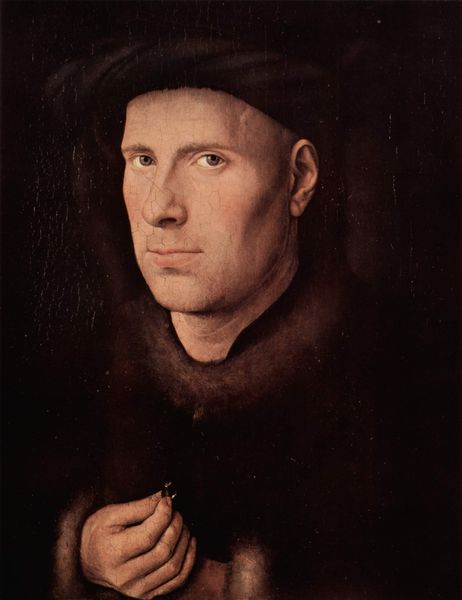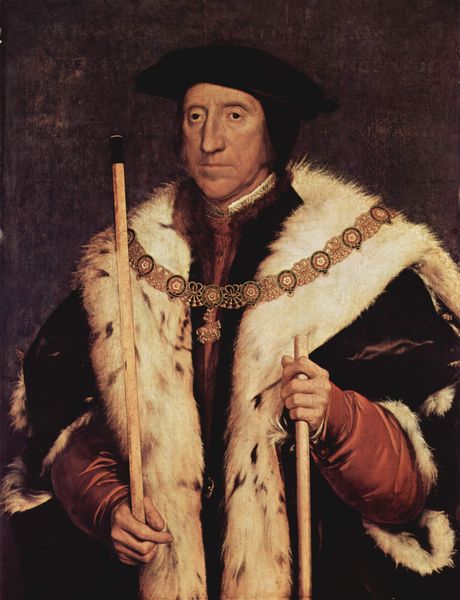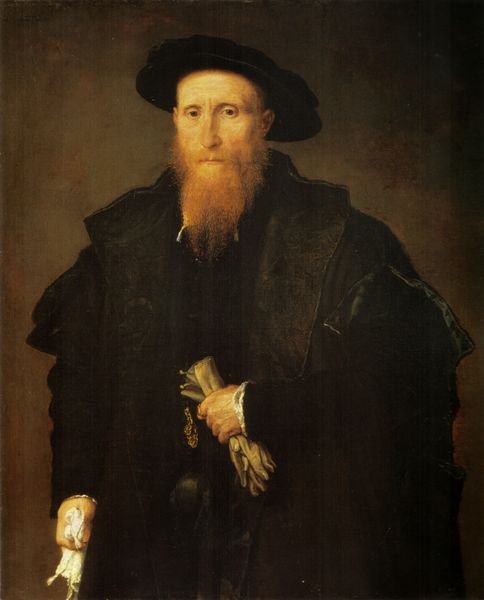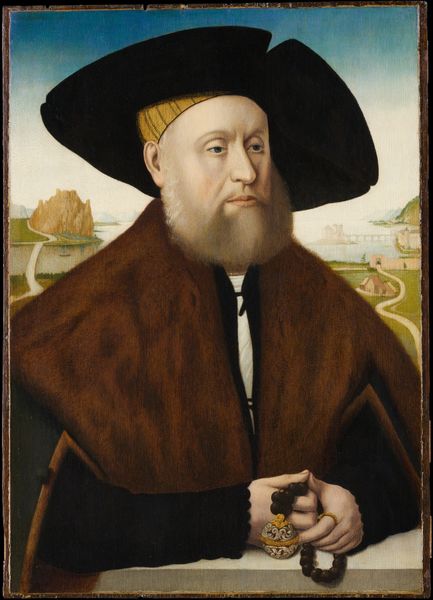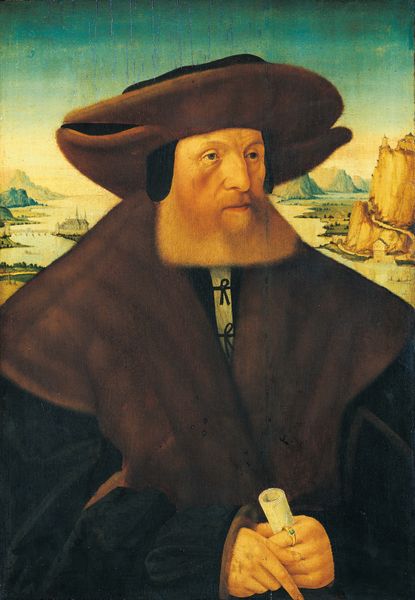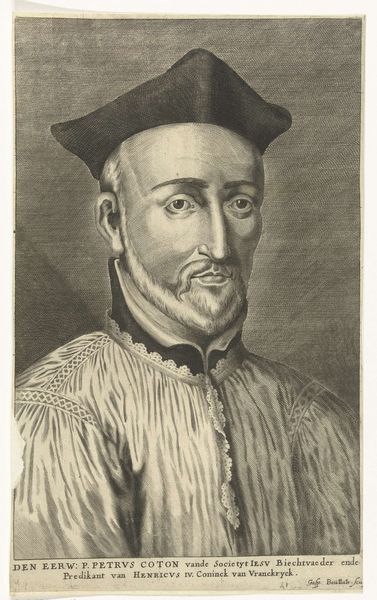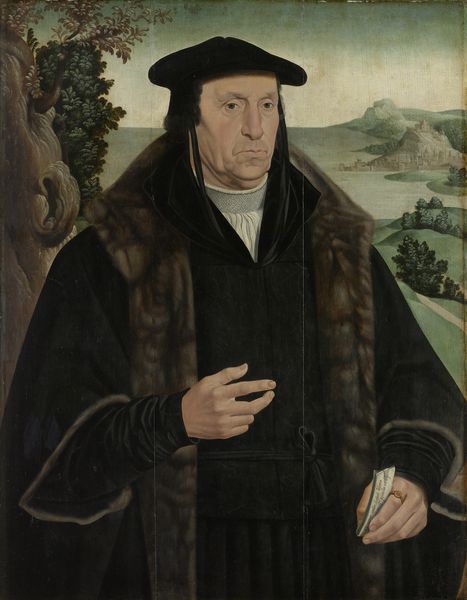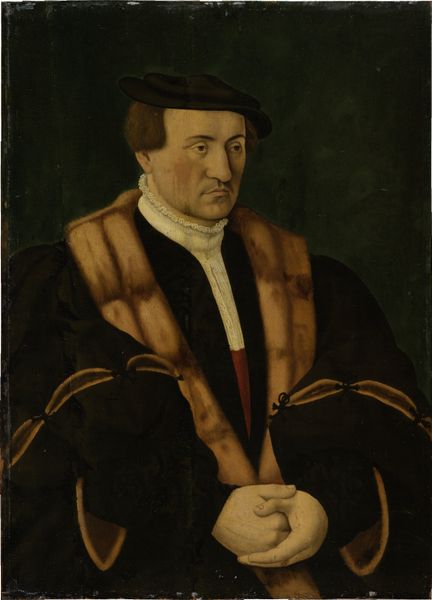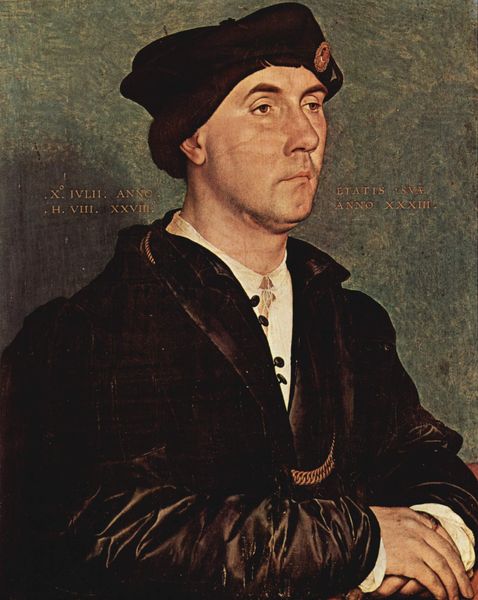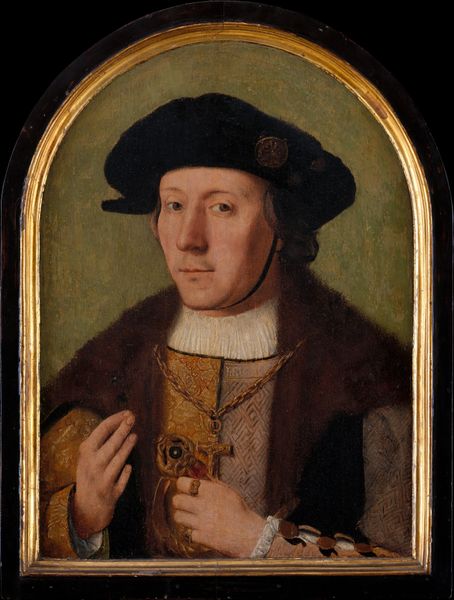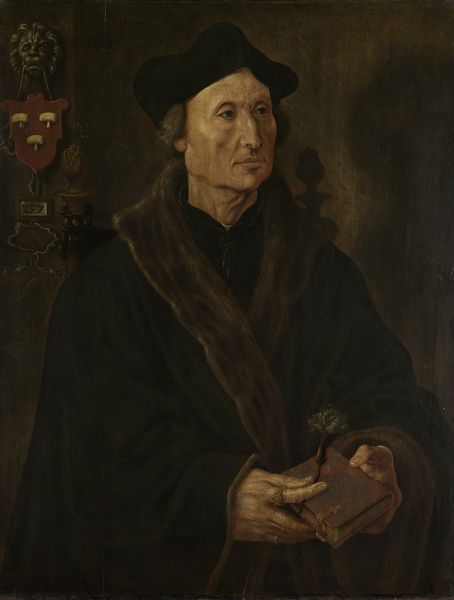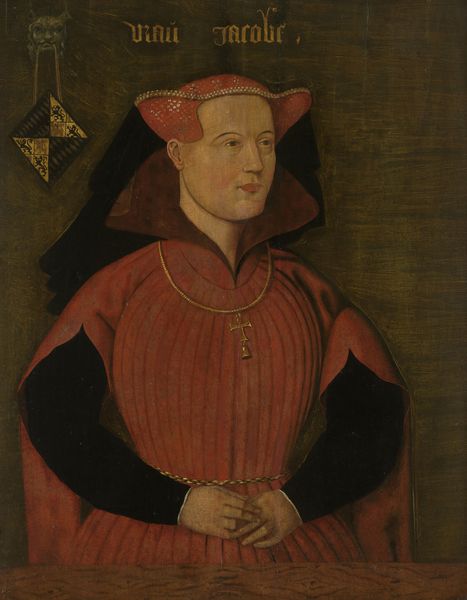
panel, oil-paint
#
portrait
#
panel
#
oil-paint
#
famous-people
#
northern-renaissance
#
realism
Dimensions: 26 x 20 cm
Copyright: Public domain
Curator: Looking at Jan van Eyck's "Portrait of Baudouin de Lannoy" from 1435, now residing in the Gemäldegalerie in Berlin, my initial impression is struck by its austerity, despite the finery on display. The subdued palette emphasizes texture above all. Editor: I see a man acutely aware of the weight of his social position. It’s palpable in the meticulous details of his clothing—status made visible—but it's equally clear in his withdrawn, slightly world-weary expression. This is about more than just likeness; it speaks to the pressures of nobility. Curator: Exactly. Think of the painstaking labour required to create that chain, its materiality indicative of Lannoy’s status as a Knight of the Golden Fleece. And consider van Eyck’s mastery of oil paint on panel to simulate these various rich textures and subtle luminosity. How those processes translate into power… fascinating! Editor: Power is undeniably a central theme. Beyond simple representation, what statements are being made about authority, legacy, and masculine identity? This man exists in a world carefully shaped by patriarchal systems and sustained by unequal power structures. How is van Eyck complicit or subversive in his representation? Curator: An interesting question to pose in relation to artistic process. Van Eyck has carefully arranged layers of glazes to conjure form; light and shadow coalesce through careful construction of materiality. He is clearly celebrating not just Lannoy, but also the potential of paint itself. Editor: But can we separate that "celebration" from the socioeconomic realities in play? Who financed van Eyck's studio, who determined the sitter, who controlled access to the materials that crafted this representation? Power operates through these details, so our job as art historians is not to marvel at Van Eyck's rendering skills, but to also dissect these contextual forces. Curator: Yes, and by examining those forces alongside van Eyck's innovative techniques, like the way he builds up highlights to depict reflective surfaces, we get a much richer view of artistic production during the Northern Renaissance. Editor: A complex tapestry indeed. It reminds us that artistic mastery often flourishes within carefully calibrated power dynamics and socio-political structures. Curator: Absolutely. An understanding of art means comprehending this complexity – not reducing it. Editor: It also prompts introspection. Art acts as mirror reflecting us through history, illuminating how such dynamics resonate even now.
Comments
No comments
Be the first to comment and join the conversation on the ultimate creative platform.
